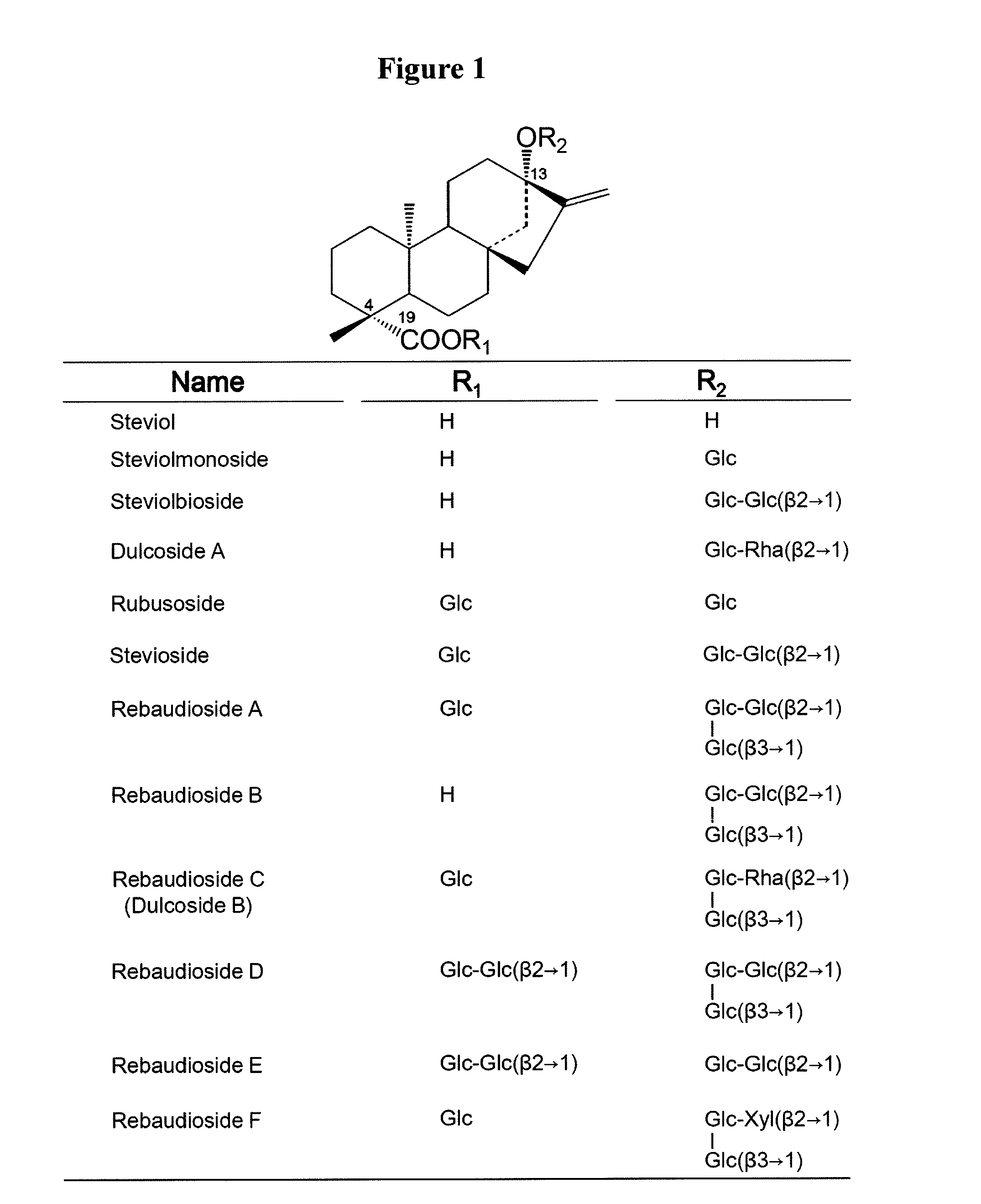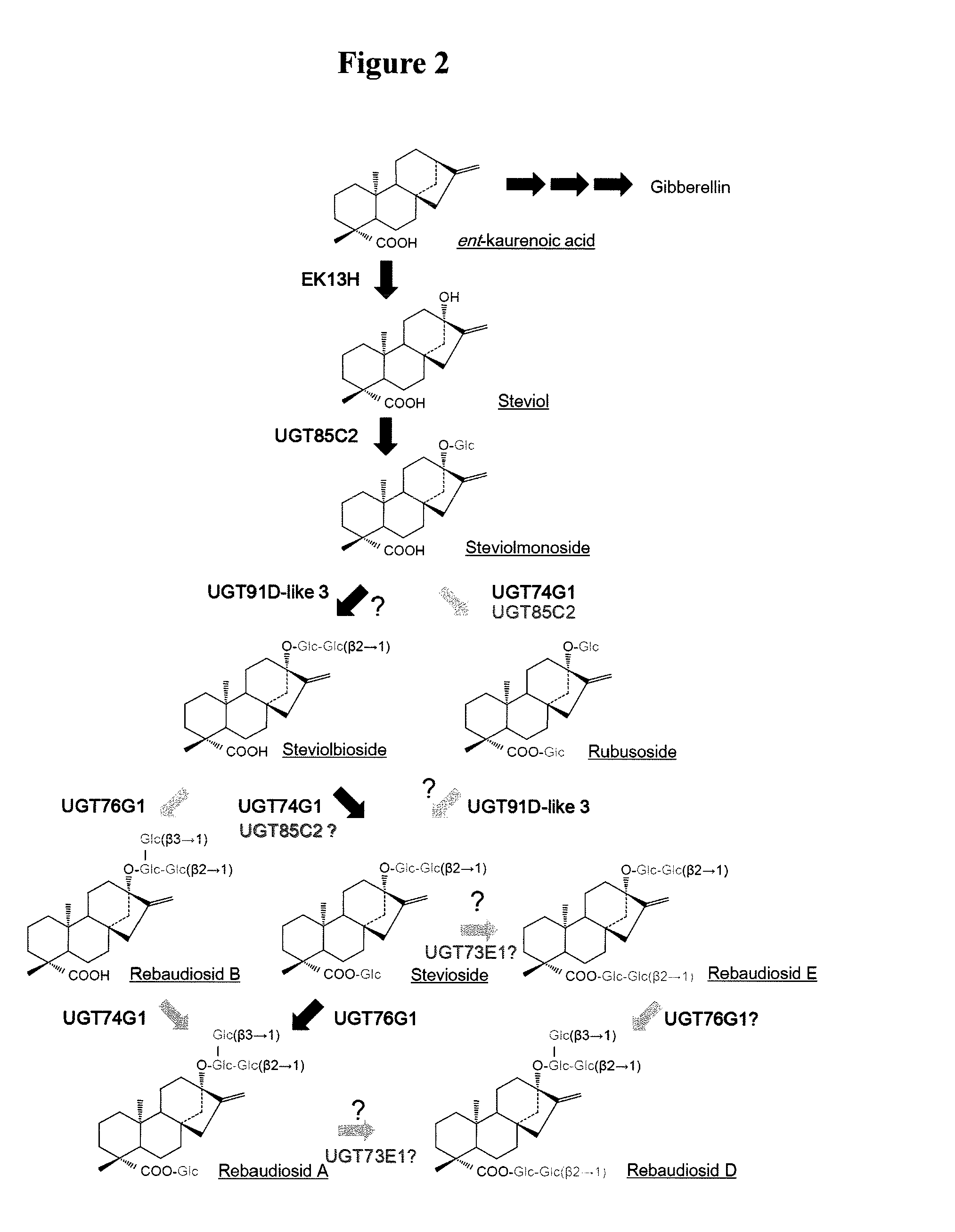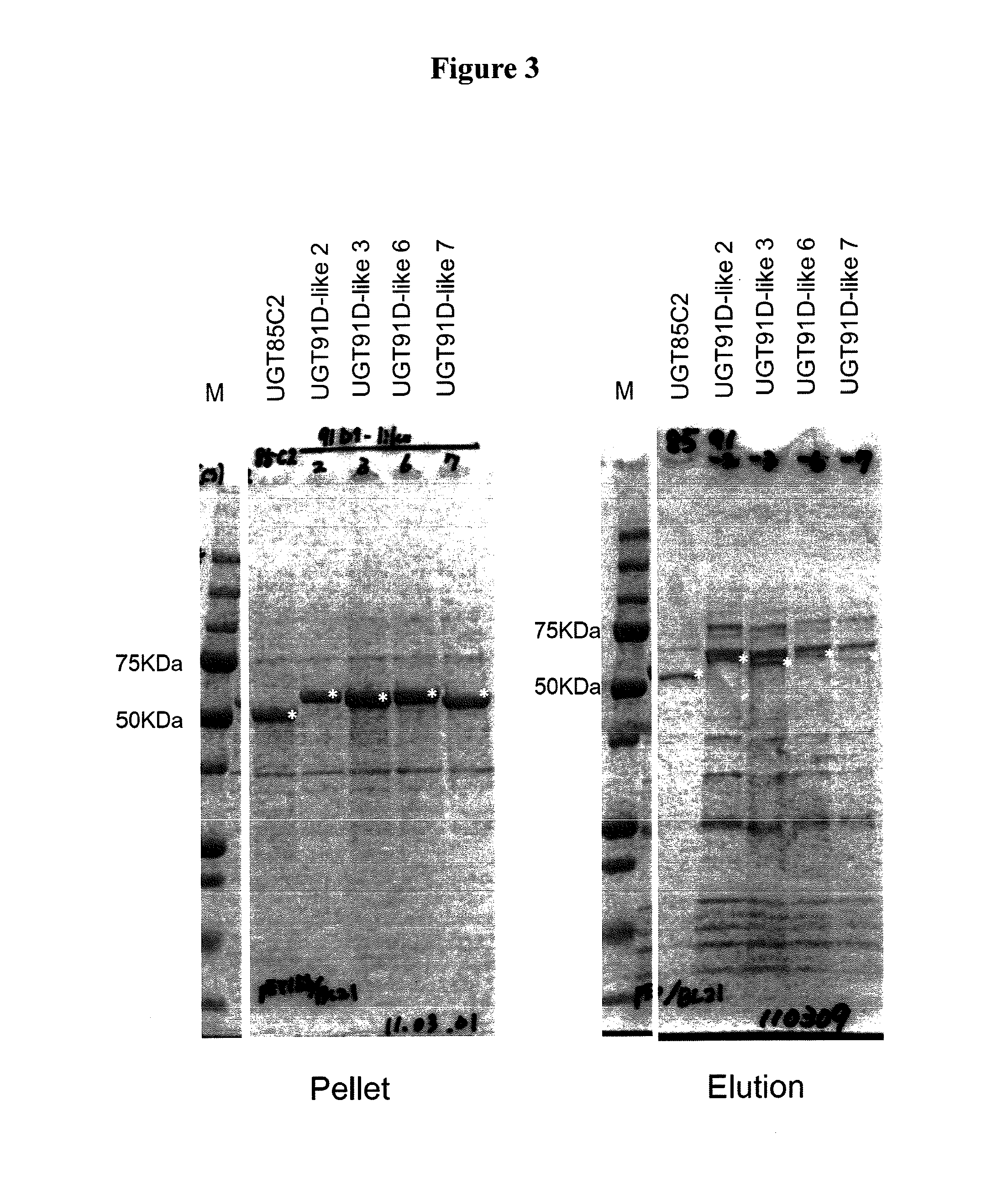Steviol glucosyltransferases and genes encoding the same
a technology of glucosyltransferases and genes, applied in the direction of transferases, biocide, sugar derivates, etc., can solve the problems that the enzyme activity of all these enzymes has not been fully investigated, and achieve the effect of high efficiency and efficient extraction
- Summary
- Abstract
- Description
- Claims
- Application Information
AI Technical Summary
Benefits of technology
Problems solved by technology
Method used
Image
Examples
example 1
Isolation of Candidate Gene for Steviolbioside Glucosyltransferase
[0166]Molecular biological techniques used in this EXAMPLE were performed in accordance with the methods described in Molecular Cloning (Sambrook et al., Cold Spring Harbour Laboratory Press, 2001), unless otherwise specified in detail.
[0167]Based on the sequence of the gene for glucosyltransferase found in stevia leaves, gene search was performed by PCR. To obtain genes highly homologous to UGT91D1 (GENBANK Accession No. AY345980), which was reported to have no activity for steviolmonoside in the prior art (Non-Patent Document 2), PCR was performed with cDNA from stevia leaves using the following primer set (SEQ ID NOS: 3 and 4).
[0168]The cDNA from stevia leaves was obtained by extracting total RNA from stevia leaves using an RNeasy Plant Mini Kit (QIAGEN) and subjecting 0.5 μg of the total RNA to reverse transcription (RT) with Random Oligo-dT primer.
CACC-NdeI-SrUGT91D1-Fw (the underlined portion is the NdeI reco...
example 2
Construction of Expression Vector
[0171]The ORF fragment of about 1.4 kb from UGT91D-like3 was excised using the restriction enzyme sites (the underlined portions of SEQ ID NOS: 3 and 4) of NdeI and BamHI added to the primer, and ligated into the NdeI and BamHI sites of Escherichia coli expression vector pET15b (Novagen, Inc.) to give Escherichia coli expression vector of this enzyme gene. His tag located upstream the NdeI site of the vector matched with the open reading frame of UGT91D-like3 gene; it was designed to express the chimeric protein of UGT91D-like3 fused to His tag.
example 3
Expression and Purification of Recombinant Protein
[0172]To clarify the biochemical functions of the enzyme, the enzyme was expressed in Escherichia coli. Using the UGT91D-like3 Escherichia coli expression plasmid obtained above, Escherichia coli BL21 (DE3) was transformed. The resulting transformants were shake-cultured in 4 ml of LB medium (10 g / l tryptone peptone, 5 g / l yeast extract, 1 g / l NaCl) containing 50 μg / ml of ampicillin at 37° C. overnight. When reached the stationary phase, 4 ml of the culture medium was inoculated onto 80 ml of a medium with the same composition, followed by shake culture at 37° C. IPTG was added in a final concentration of 0.5 mM at the point when the cell turbidity (OD600) reached approximately 0.5. Shake culture was continued at 18° C. for 20 hours.
[0173]The following procedures were all performed at 4° C. The transformants cultured were collected by centrifugation (5,000×g, 10 mins.), and suspended by adding 1 ml / g cell of Buffer S [20 mM HEPES buf...
PUM
| Property | Measurement | Unit |
|---|---|---|
| temperature | aaaaa | aaaaa |
| pressure | aaaaa | aaaaa |
| pH | aaaaa | aaaaa |
Abstract
Description
Claims
Application Information
 Login to View More
Login to View More - R&D
- Intellectual Property
- Life Sciences
- Materials
- Tech Scout
- Unparalleled Data Quality
- Higher Quality Content
- 60% Fewer Hallucinations
Browse by: Latest US Patents, China's latest patents, Technical Efficacy Thesaurus, Application Domain, Technology Topic, Popular Technical Reports.
© 2025 PatSnap. All rights reserved.Legal|Privacy policy|Modern Slavery Act Transparency Statement|Sitemap|About US| Contact US: help@patsnap.com



